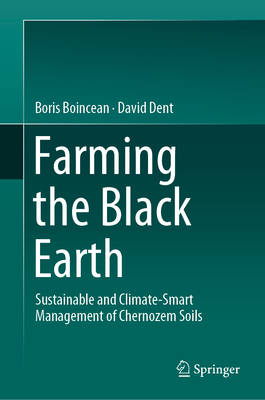
- Afhalen na 1 uur in een winkel met voorraad
- Gratis thuislevering in België vanaf € 30
- Ruim aanbod met 7 miljoen producten
- Afhalen na 1 uur in een winkel met voorraad
- Gratis thuislevering in België vanaf € 30
- Ruim aanbod met 7 miljoen producten
Farming the Black Earth
Sustainable and Climate-Smart Management of Chernozem Soils
Boris Boincean, David DentOmschrijving
This book deals with the sustainability of agriculture on the Black Earth by drawing on data from long-term field experiments. It emphasises the opportunities for greater food and water security at local and regional levels.
The Black Earth, Chernozem in Russian, is the best arable soil in the world and the breadbasket of Europe and North America. It was the focus of scientific study at the very beginnings of soil science in the late 19th century--as a world in itself, created by the roots of the steppe grasses building a water-stable granular structure that holds plentiful water, allows rapid infiltration of rain and snow melt, and free drainage of any surplus.
Under the onslaught of industrial farming, Chernozem have undergone profound but largely unnoticed changes with far-reaching consequences--to the point that agriculture on Chernozem is no longer sustainable. The effects of agricultural practices on global warming, the diversion of rainfall away from replenishment of water resources to destructive runoff, and the pollution of streams and groundwater are all pressing issues. Sustainability absolutely requires that these consequences be arrested.
Specificaties
Betrokkenen
- Auteur(s):
- Uitgeverij:
Inhoud
- Aantal bladzijden:
- 226
- Taal:
- Engels
Eigenschappen
- Productcode (EAN):
- 9783030225322
- Verschijningsdatum:
- 20/09/2019
- Uitvoering:
- Hardcover
- Formaat:
- Genaaid
- Afmetingen:
- 155 mm x 235 mm
- Gewicht:
- 648 g

Alleen bij Standaard Boekhandel
Beoordelingen
We publiceren alleen reviews die voldoen aan de voorwaarden voor reviews. Bekijk onze voorwaarden voor reviews.











